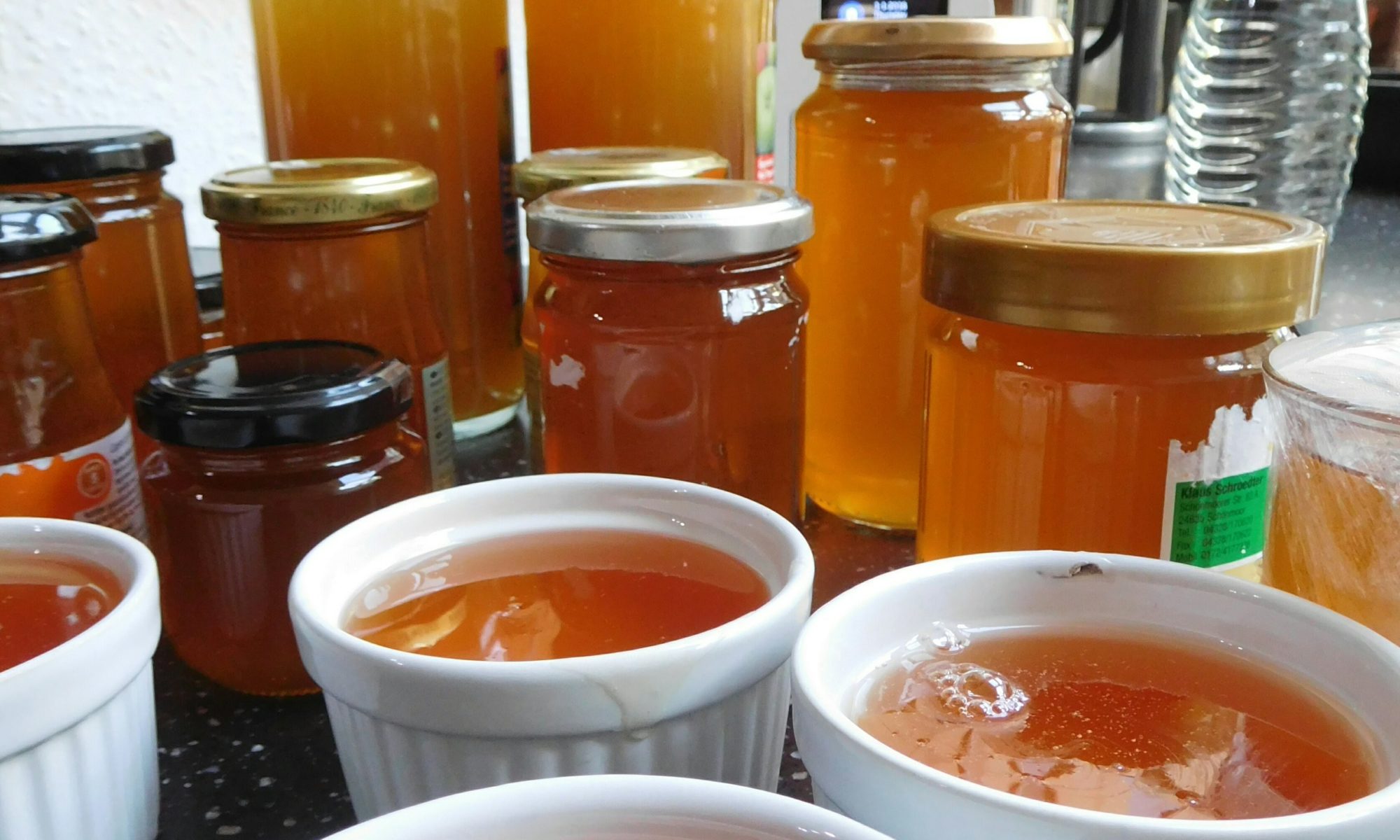 Well, I say millefeuille but really we are talking about three sheets of double-layered filo pastry, but it does make for an excellent starter!
Well, I say millefeuille but really we are talking about three sheets of double-layered filo pastry, but it does make for an excellent starter!
It’s impressive, it has the Wow! factor, and it isn’t all that hard to make. A great way to start a dinner party.
My Goats Cheese Millefeuille is a small stack of double-layered filo pastry, flavoured with fennel pollen and baked crisp. In between the sheets is an assortment of textures and flavours such as molten goats cheese, roasted beetroot, raw fennel shavings, raspberries and blueberries.
The exact choice of incredients for the filling isn’t very important so long as they combine well and offer variety in texture and aroma.
Goats cheese is required unless you change the name of the dish. I usually use the types which are rolled in ash, and melt them in a frying pan with a spot of butter.
Roasted beetroot, lightly tossed with balsamic vinegar, a small splash of lime juice and a sprinkling of salt works beautifully.
Soured cream will provide moisture, or perhaps a spoonful of roasted fennel puree, the Missus’ favourite.
Raw fennel shavings are always nice and, speaking of shavings, Parmesan cheese shavings could also work well.
A fruit component is, in my opinion, essential. Fresh raspberries, blueberries or blackberries work well and look great. Blood orange or grapefruit fillets could also work if your citrus fruit filleting skills are OK; the fruit can’t be soggy or it ruins the filo.
For the filo sheets, the method is simple:
Buy a pack of good quality filo sheets. Prefer the not frozen variety if you can. Roll out one, and cover generously with melted butter (warm, not hot!). Give it a generous sprinkling of fennel pollen, then add another sheet of filo pastry. Not everyone has fennel pollen in the spice cupboard (and it is a little bit on the expensive side unless you are foraging). Alternatively, course black pepper or fresh nutmeg shavings also work well.
Cut the double-layer into the required size, maybe as large as a playing card, using a pair of scissors. Place on baking parchment, then bake at 190 C until dark golden, approximately 10 minutes.
Take out of the oven, very gently transfer onto a cooling rack and leave there until it is time to assemble. Use the pictures and your own imagination as a guide!


















 Everybody loves these, and most people usually say “oh! I remember we used to make those, too!”
Everybody loves these, and most people usually say “oh! I remember we used to make those, too!”




 This is not so much a precise recipe than a concept, a base for improvisation. I expect that no two of these game terrine will ever be the same, but they will all be rather nice as a starter, or as a light lunch with fresh bread and a light salad.
This is not so much a precise recipe than a concept, a base for improvisation. I expect that no two of these game terrine will ever be the same, but they will all be rather nice as a starter, or as a light lunch with fresh bread and a light salad.








 Well, I say millefeuille but really we are talking about three sheets of double-layered filo pastry, but it does make for an excellent starter!
Well, I say millefeuille but really we are talking about three sheets of double-layered filo pastry, but it does make for an excellent starter!




 This is a scrumptious goats’ cheese tarte, which makes for a great vegetarian lunch or supper.
This is a scrumptious goats’ cheese tarte, which makes for a great vegetarian lunch or supper.



 From the vegetarian department:
From the vegetarian department:


 Here’s an all-time favourite. It’s Tarte Flambé to the French, Flammkuchen to us, and not very well known outside the southwestern Germany and northeastern French areas. But everyone loves it!
Here’s an all-time favourite. It’s Tarte Flambé to the French, Flammkuchen to us, and not very well known outside the southwestern Germany and northeastern French areas. But everyone loves it!



 Spanakopita is a Greek spinach tarte. This is a slightly up-market version: instead of a flat tarte with a varying degree of density, soggyness and puffyness, our open Spanakopita is baked as a stand-up roll of filo pastry with the traditional spanakopita filling of spinach, feta cheese and pine kernels.
Spanakopita is a Greek spinach tarte. This is a slightly up-market version: instead of a flat tarte with a varying degree of density, soggyness and puffyness, our open Spanakopita is baked as a stand-up roll of filo pastry with the traditional spanakopita filling of spinach, feta cheese and pine kernels.






 This is based on a recipe published by Michel Roux Jr. It takes some time to make. We think it’s worth the extra effort, but not everyone may agree.
This is based on a recipe published by Michel Roux Jr. It takes some time to make. We think it’s worth the extra effort, but not everyone may agree.